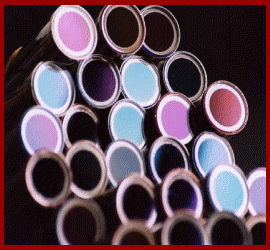| |||||||||||||||||||||||||||||||||||
 | Welcome to the "History of CCTV" Section | ||||||||||||||||||||||||||||||||||
 | |||||||||||||||||||||||||||||||||||
<< The faceplates of 2/3" 'Vidicon' camera tubes - circa 1980 | |||||||||||||||||||||||||||||||||||
Whilst a few European cities experimented with using cameras for traffic control, the residential use of CCTV was simply restricted to those wealthiest individuals, with the biggest properties. Of course, as the scale and pattern of criminal behaviour has accelerated over the last twenty years or so, there has been an ever growing demand for visual surveillance throughout practically every aspect of modern life. In response to spiralling crime, successive UK governments have over the last ten years, pumped hugh sums of public funding into encouraging the widespread adoption of public area CCTV. So much so, that the United Kingdom is now ‘guesstimated’ to have perhaps three to four (or more!) million Closed Circuit TV cameras in use, and questionably claims its ranking as the CCTV capital of the world. As with most things in life, quantity doesn’t always equate to quality, so if you browse through other areas of this site, you’ll quickly get a much better idea as to why Doktor Jon considers, there is still so much room for improvement. In the meantime, let’s take a very brief look at the modern development of Closed Circuit Television.
| |||||||||||||||||||||||||||||||||||
< 2/3" and 1" 'Vidicon' camera tubes | |||||||||||||||||||||||||||||||||||
The inverted image produced by the lens was then brought into sharp focus on the front ‘face’ of the tube, which itself incorporated a special chemical layer, protected behind the flat glass ‘faceplate’. In very simple terms, this chemical layer would convert the image into a low level electrical signal, which is then amplified and processed into a displayable video signal. | |||||||||||||||||||||||||||||||||||
 | |||||||||||||||||||||||||||||||||||
IMPORTANT: No material may be reproduced, copied or redistributed from this site, © doktorjon.co.uk 2004 - 2008 Homepage...:...Gateway...:...Technical Gateway....:....Quickfind Index....:....Equipment Directory | |||||||||||||||||||||||||||||||||||

